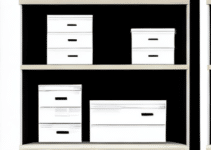A symptom that can occur during emergencies often requires immediate attention and can be alleviated by having essential medicines in your emergency medical kit. It is important to have a supply of adhesive bandages, antiseptic wipes, and antibiotic ointment to treat minor cuts and scrapes that may occur.
It is advisable to include a topical cream or ointment for treating burns and aloe vera gel for soothing sunburns.
These items can provide relief and aid in the healing process.
In addition to medicines and first aid supplies, it is crucial to have important documents such as copies of identification, emergency contact numbers, and insurance information in your emergency kit. These documents can be stored in a waterproof container or sealed plastic bag to protect them from any medical emergency that may arise, ensuring the safety of important information alongside emergency medicine and first aid supplies.
Click here to learn more about: patriot
Scissors
When it comes to handling scissors in disaster preparedness, it is important to take proper care and maintenance of your emergency medication and first aid kit supplies. Cleaning the blades and pivot regularly will prevent dirt and debris buildup, which helps ensure smooth and efficient cutting.
Storing scissors in a safe and dry place is crucial to protect their sharpness and prevent rusting.
It is also important to keep scissors out of the reach of children to avoid accidents.
By following these simple steps, you can prolong the lifespan of your scissors and continue to enjoy their precise cutting abilities
Thermometer
When it comes to emergency medical care and first aid essentials, a thermometer is a vital tool that should not be overlooked in your first aid kit contents. Whether you're preparing an emergency response plan or stocking up your first aid kit contents, including a thermometer is crucial.
It provides accurate temperature monitoring, which can provide valuable information for medical professionals and aid in determining the appropriate course of action during times of crisis or trauma.
So, when assembling your emergency preparedness kit or restocking your emergency medicine supplies, be sure to include a reliable thermometer
Including a Thermometer in Your First Aid Kit
- Accurate temperature monitoring is essential for diagnosing and managing various medical conditions.
- A thermometer can help detect fever, which is often an early sign of infection or illness.
- Having a thermometer in your first aid kit allows for quick assessment of body temperature, which is crucial in emergencies.
- Medical professionals rely on accurate temperature readings to determine the severity of an illness or injury and make informed treatment decisions.
Gloves
The first thing you need to determine is the intended use of the gloves. Whether you need gloves for industrial work, medical purposes, or sports activities, each type of glove is designed to cater to specific needs.
Another important consideration is the material of the gloves.
Common materials include latex, nitrile, vinyl, and leather, each with its own set of advantages and disadvantages.
Selecting the right size and fit is essential for optimal comfort and dexterity. Ill-fitting gloves can restrict movement and make tasks more difficult.
Proper maintenance is crucial to prolong the lifespan of your gloves.
Essential Medicines for Emergency Kits
In the event of an emergency, it is crucial to have a well-stocked emergency medical kit checklist that includes a selection of essential medicines for prompt and effective emergency medical aid. These medicines play a vital role in providing immediate relief and managing various health issues that may arise during emergencies.
When selecting the most appropriate medications for emergency kits, it is important to consider factors such as emergency medical response, shelf life, storage conditions, and their ability to treat a wide range of conditions.
Some commonly recommended essential medicines include emergency medical products, pain relievers, antihistamines, and antacids.
These medications can help alleviate pain, reduce allergy symptoms, and provide relief from indigestion or heartburn. Fever reducers are also considered essential in emergency situations. It is vital to regularly check expiration dates and consult with a healthcare professional to ensure the effectiveness and safety of your emergency medical products.
Emergency Medical Kits
- Emergency medical kits are crucial for providing prompt and effective emergency medical aid.
- Well-stocked emergency medical kits include a selection of essential medicines that play a vital role in managing various health issues during emergencies.
- When selecting medications for emergency kits, factors such as emergency medical response, shelf life, storage conditions, and ability to treat a wide range of conditions should be considered.
- Commonly recommended essential medicines for emergency kits include emergency medical products, pain relievers, antihistamines, antacids, and fever reducers.
Choosing Medicines for Emergency Kits
When selecting the appropriate medicines for your emergency kit, it is important to consider several key factors, such as emergency medical situations and the need for emergency medical intervention. First and foremost, understanding the potential emergencies that you may face is crucial.
If you reside in an area prone to natural disasters like hurricanes or earthquakes, it is essential to include medications that can treat common injuries or ailments that may arise during these situations.
Some examples of these medications could include wound care supplies, anti-diarrheal medication, or electrolyte solutions.
It is important to take into account the specific needs of your household. If any family members have chronic conditions or allergies, it is necessary to include their necessary medications or EpiPens in the emergency kit. By doing so, you can prioritize everyone's health and well-being during emergency medical situations by implementing effective emergency medical procedures.
The Role of Painkillers in Emergency Medicine
In emergency medicine, painkillers are essential for providing immediate relief to patients in acute pain, and it is crucial for emergency medical personnel to receive proper training on administering these medications. These medications are utilized by emergency medical professionals and emergency medical services teams and play a crucial role in managing pain caused by various conditions, injuries, or medical procedures.
They swiftly alleviate pain and discomfort, allowing medical experts to concentrate on addressing the underlying cause of the pain.
The selection of painkillers depends on the severity of the pain.
Nonsteroidal anti-inflammatory drugs (NSAIDs) are used to relieve mild to moderate pain, while opioids are administered for more severe cases. It is important to consider factors such as the patient's age, weight, and medical history when determining the proper dosage and administration of painkillers. By carefully evaluating these factors and selecting the appropriate painkiller and dosage, emergency medical personnel can effectively administer relief and ensure the patient's well-being.
Antibiotics for Emergency Kits
Emergency medical support personnel receive emergency medical response training to ensure they are equipped with the necessary knowledge and skills to administer antibiotics, which are a crucial component of any well-prepared emergency kit for providing life-saving treatment in situations where immediate medical attention may not be accessible. When selecting emergency medical response procedures for your emergency kit, there are several important factors to consider.
First and foremost, choose antibiotics that have a broad spectrum of activity to effectively treat various bacterial infections that may arise in an emergency.
It is also important to prioritize antibiotics with a long shelf life and the ability to withstand different environmental conditions, as emergency kits are typically stored for extended periods.
Ensure that the antibiotics are easy to administer, such as tablets or capsules, and come with clear instructions. Consulting with healthcare professionals or pharmacists is crucial to select the appropriate antibiotics based on individual needs and medical history. By including antibiotics in your emergency kit, you ensure that you are well-prepared for potential health emergencies and can provide crucial support until emergency medical services personnel arrive.
Antiseptics for Wound Care in Emergencies
It is important to note that antiseptics alone cannot replace proper wound cleaning and management, which are crucial components of emergency medical treatment procedures. In emergency situations, it is recommended to have a well-stocked emergency kit that includes not only antiseptics but also other essential wound care supplies such as sterile dressings, adhesive tape, and scissors.
Some of the best antiseptics for wound care in emergencies include:
Chlorhexidine: This antiseptic has broad-spectrum activity and is effective against both gram-positive and gram-negative bacteria.
It also has a residual effect, meaning it continues to work even after application.
Povidone-Iodine: This antiseptic is highly effective against bacteria, viruses, and fungi. It is fast-acting and has emergency medical treatment intervention to ensure prompt and effective care.
Antiseptics for Wound Care in Emergencies
- Chlorhexidine is a highly effective antiseptic for wound care in emergencies. It has broad-spectrum activity and can effectively kill both gram-positive and gram-negative bacteria.
- Povidone-Iodine is another excellent antiseptic for wound care in emergencies. It is not only effective against bacteria but also viruses and fungi, making it a versatile choice for emergency medical treatment.
- Antiseptics like Chlorhexidine and Povidone-Iodine have a residual effect, meaning they continue to work even after application. This ensures that the wound remains protected against infection for an extended period.
- Proper wound cleaning and management are crucial components of emergency medical treatment procedures. While antiseptics play a vital role in preventing infection, they should not replace thorough wound cleaning and the use of other essential wound care supplies like sterile dressings, adhesive tape, and scissors.
MustHave Supplies Bandages and Gauze
When it comes to essential supplies for any first aid kit, bandages and gauze are a must-have in emergency medical treatment. These items play a critical role in treating wounds and preventing infections.
Bandages come in different sizes and types, including adhesive, elastic, and triangular options.
Adhesive bandages are ideal for small cuts and scrapes, while elastic bandages provide support for sprained joints.
Triangular bandages offer multipurpose use, serving as slings, tourniquets, or splint securing. Gauze, on the other hand, is a versatile material that can be used to cover wounds, apply pressure, or clean injuries.
It is available in various forms, such as sterile pads, rolls, or sponges, making it an essential component of any first aid kit
Importance of Adhesive Tape in Emergencies
Adhesive tape plays a crucial role in emergency situations by securing bandages, gauze, and other medical supplies essential for effective emergency medical treatment management training. One important use of adhesive tape is securing bandages and dressings, providing necessary support and preventing further injury.
Adhesive tape's strong adhesive properties ensure that bandages stay in place, even during movement or transportation.
This makes it an essential component of first aid kits and emergency medical supplies.
In addition to its medical applications, adhesive tape is also versatile in other emergency situations. When professional help is not immediately available, adhesive tape can be used for temporary repairs, fixing broken items or securing loose objects.
Its dependable adhesive properties and durability make it a reliable tool for quick fixes in critical situations. The presence of adhesive tape in emergency supplies has psychological benefits, as it ensures the necessary tools for effective emergency medical treatment management training.
Adhesive Tape in Emergency Situations
- Adhesive tape is crucial for securing bandages, gauze, and other medical supplies in emergency situations.
- Its strong adhesive properties ensure that bandages stay in place, providing necessary support and preventing further injury.
- Adhesive tape is versatile and can be used for temporary repairs, fixing broken items, or securing loose objects when professional help is not immediately available.
- The presence of adhesive tape in emergency supplies has psychological benefits, as it ensures the necessary tools for effective emergency medical treatment management training.
Disaster Preparedness Powerful Pharmaceuticals for Safety
Survival Kit Essentials Your Prescription List





